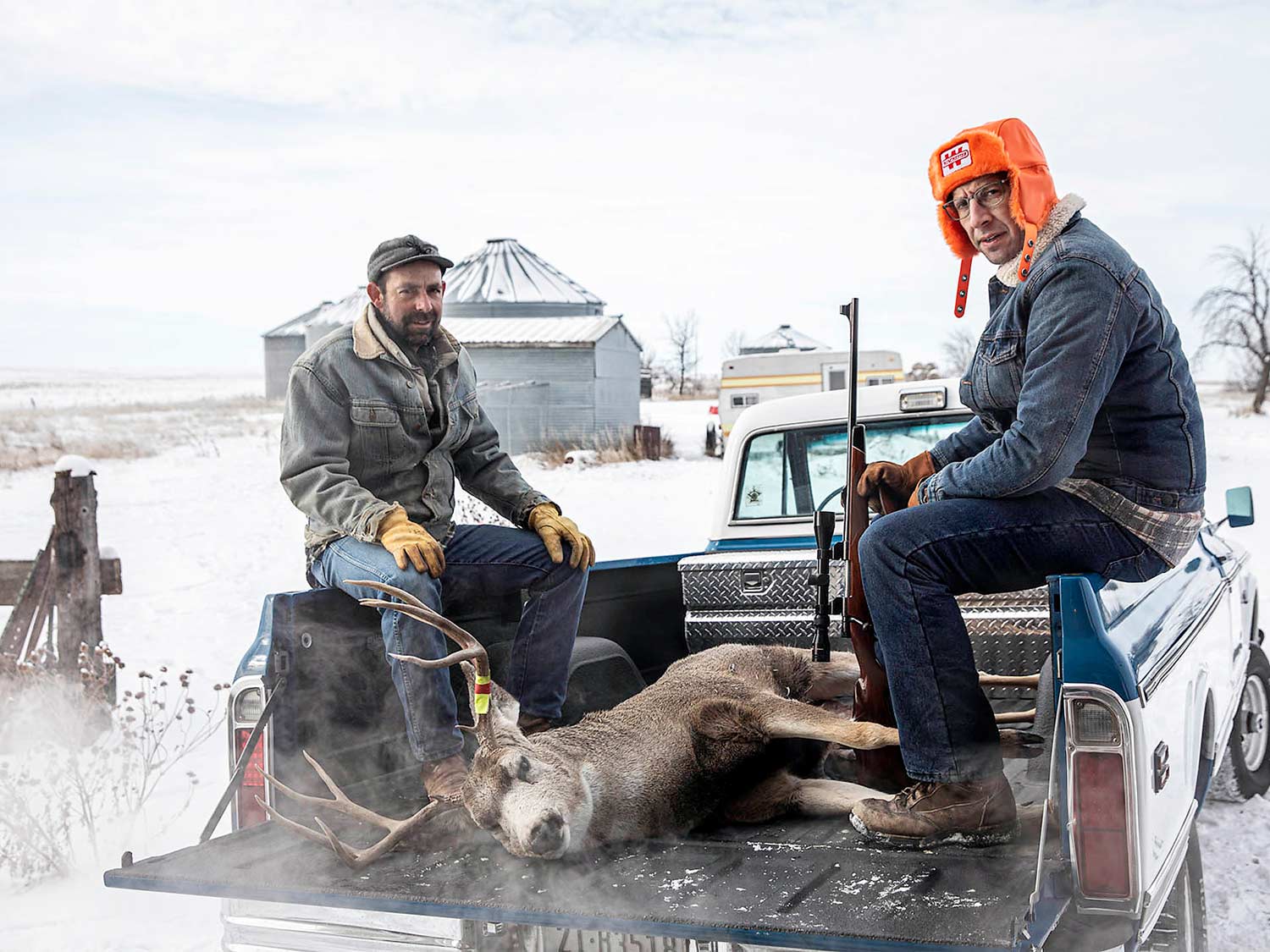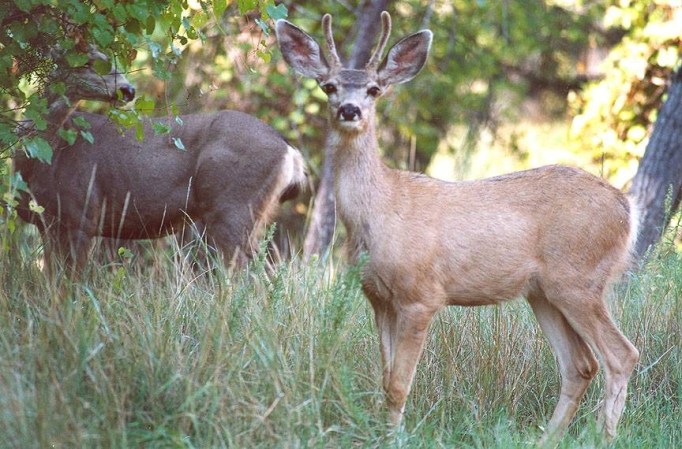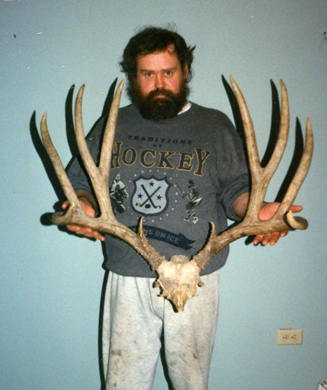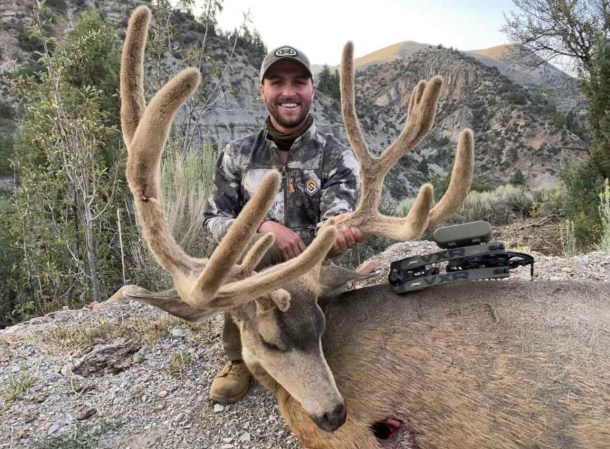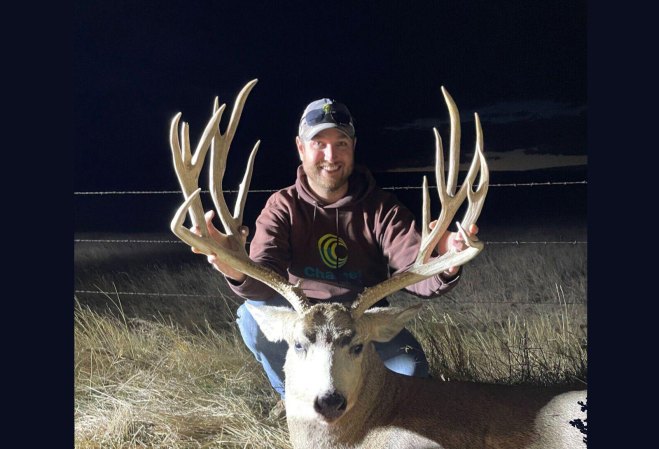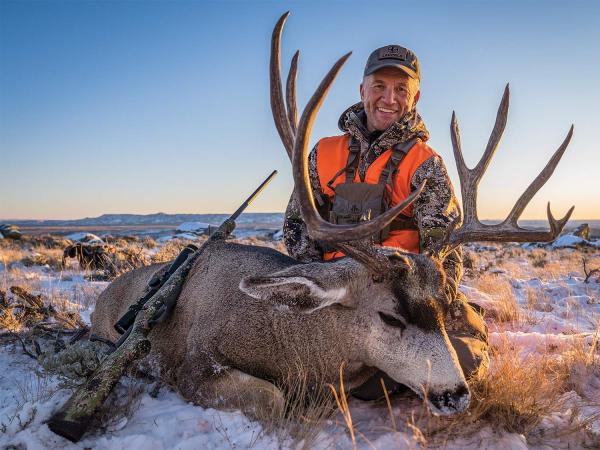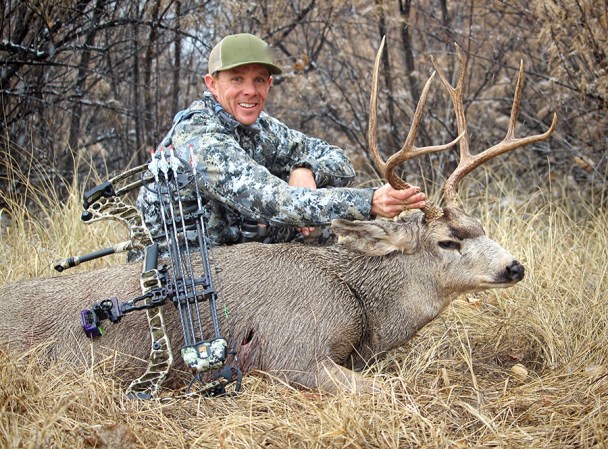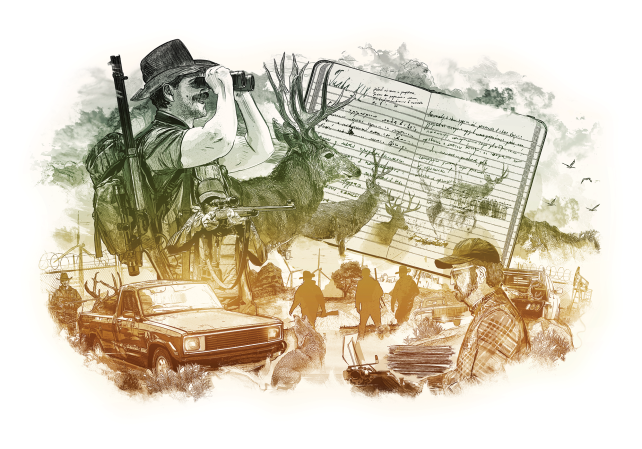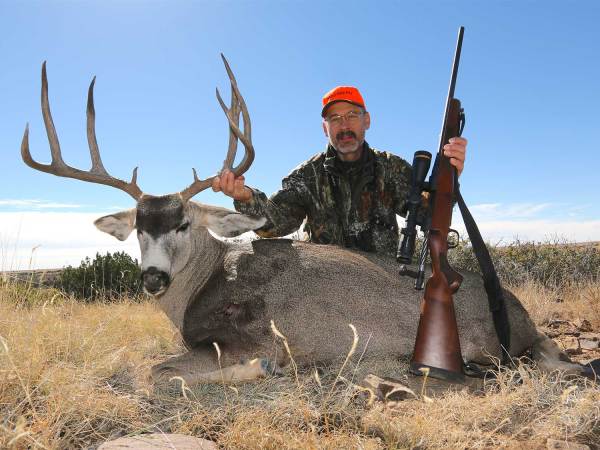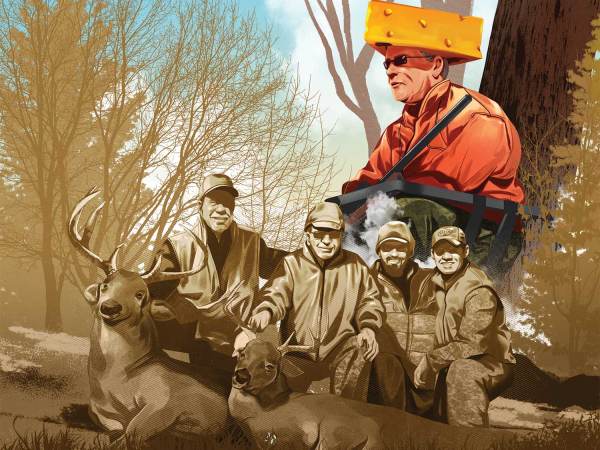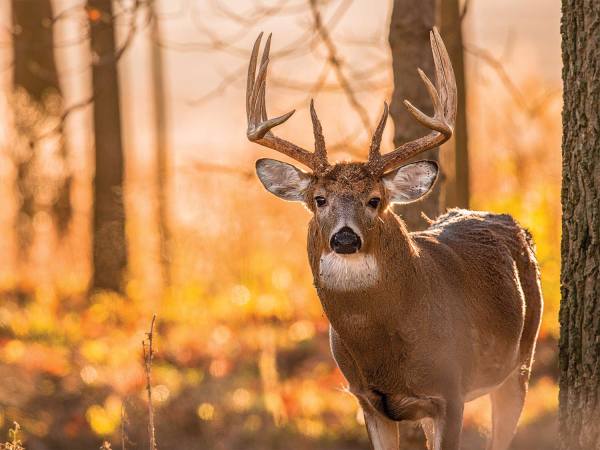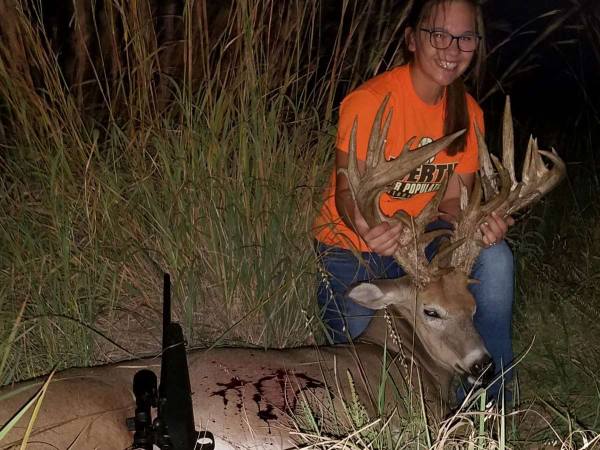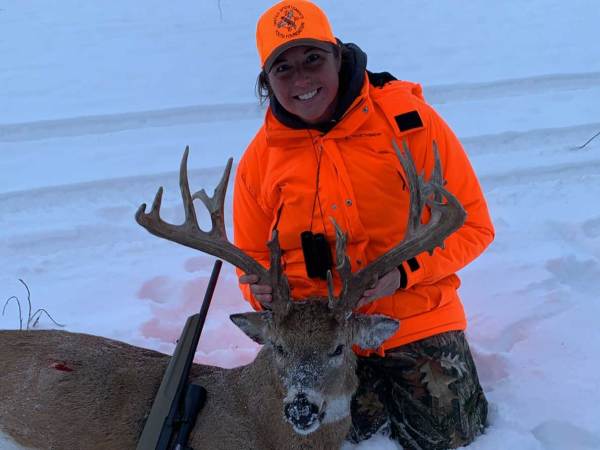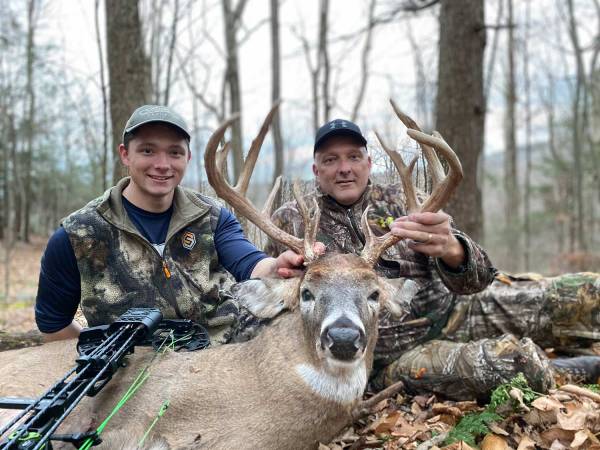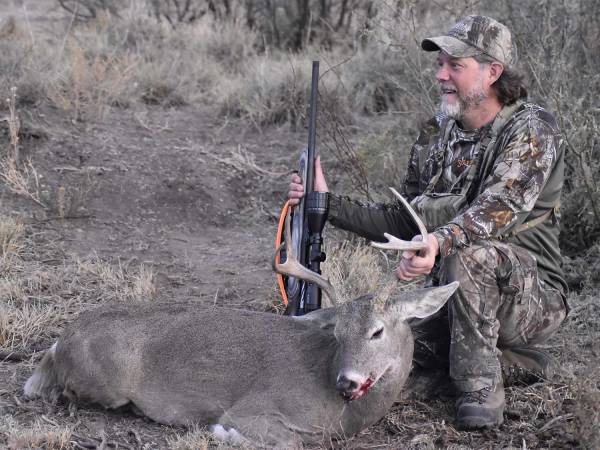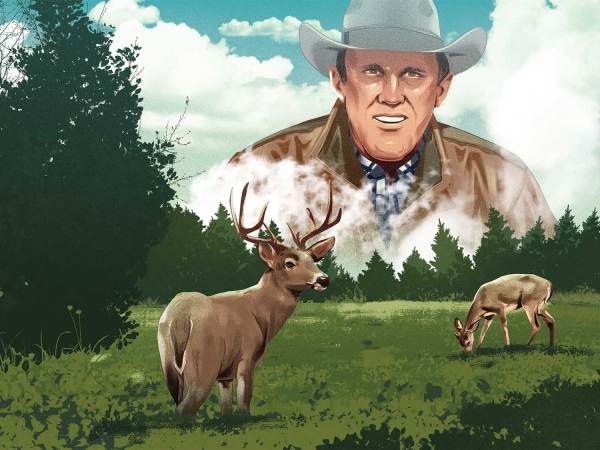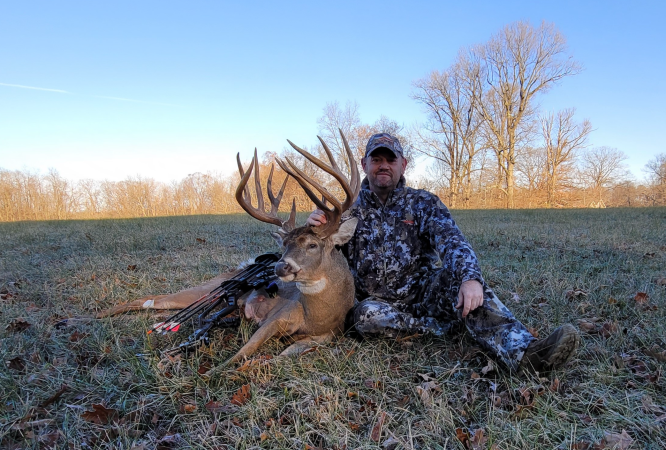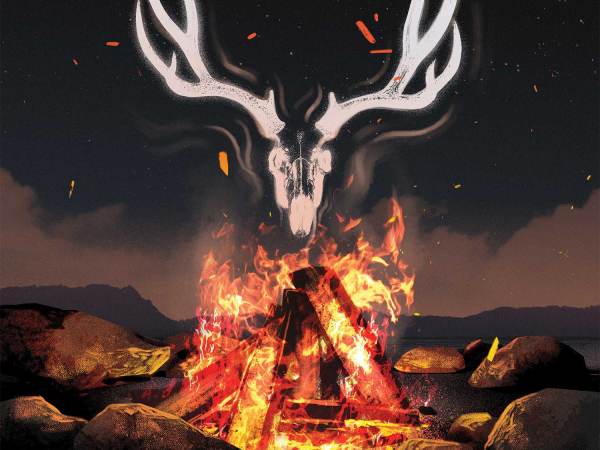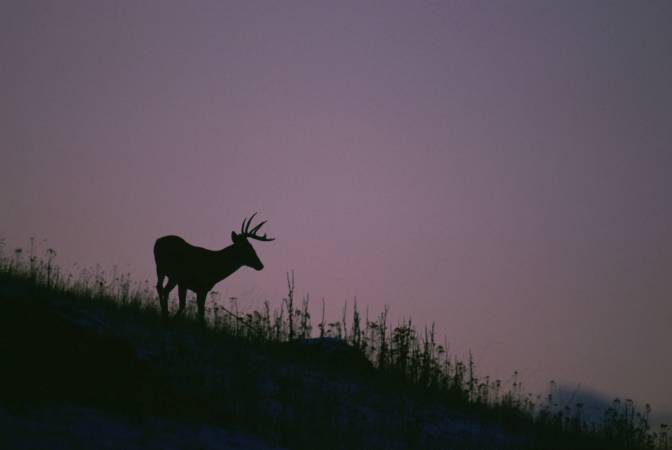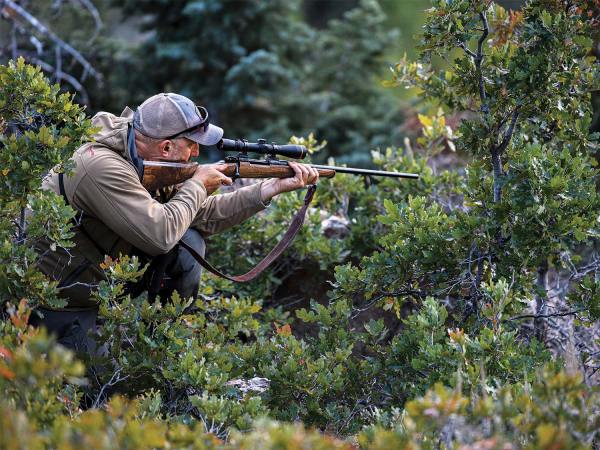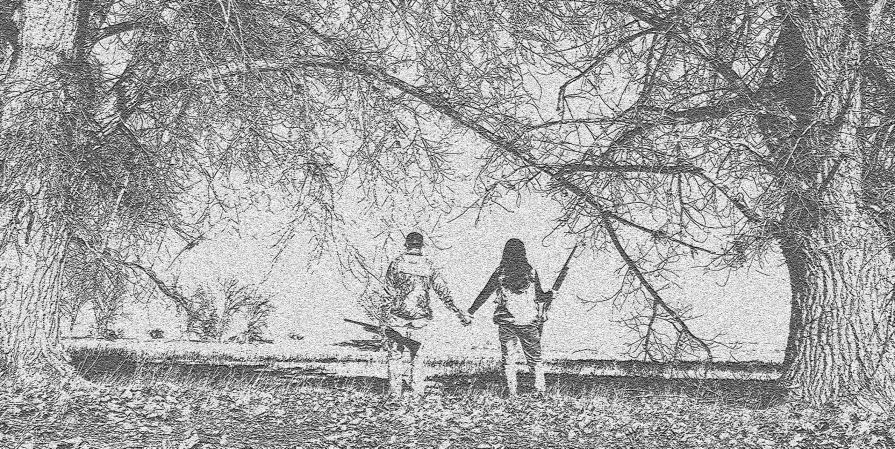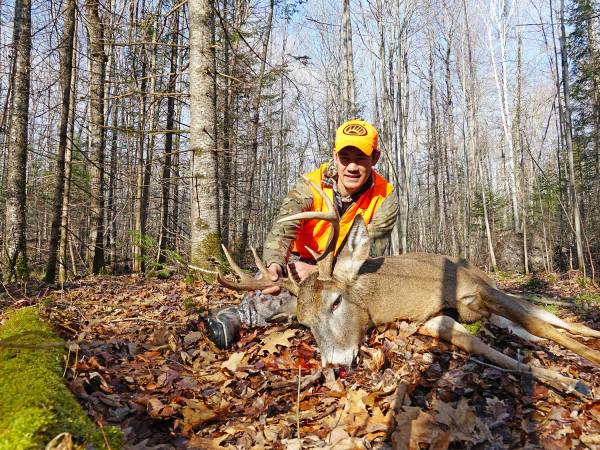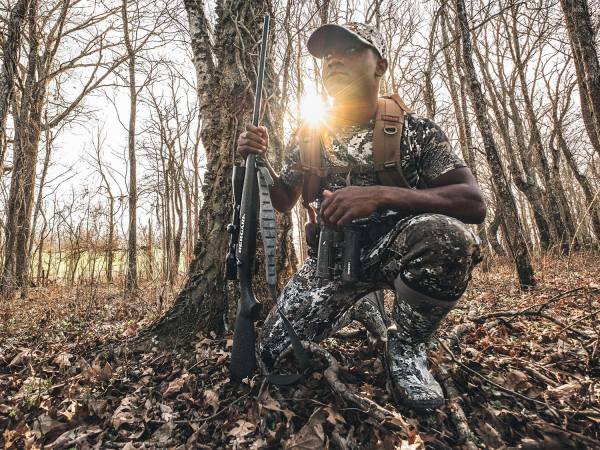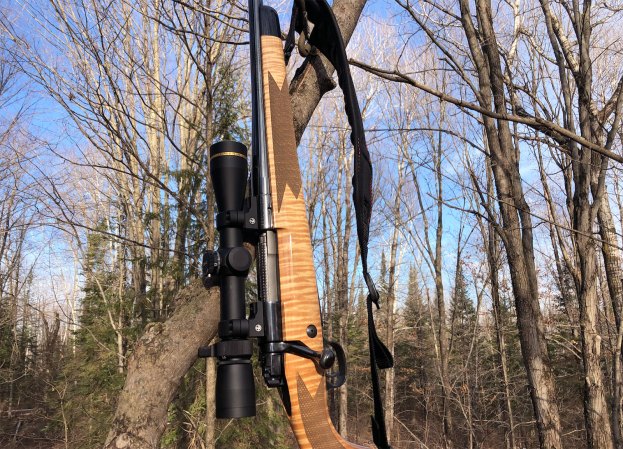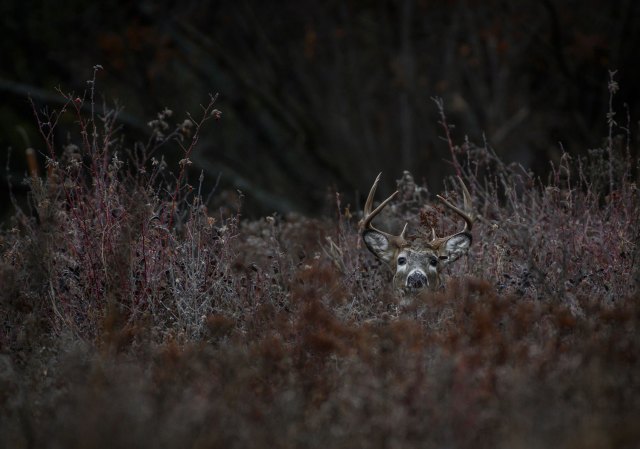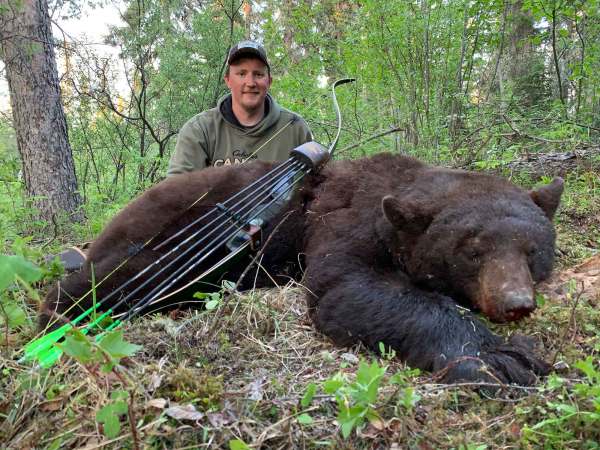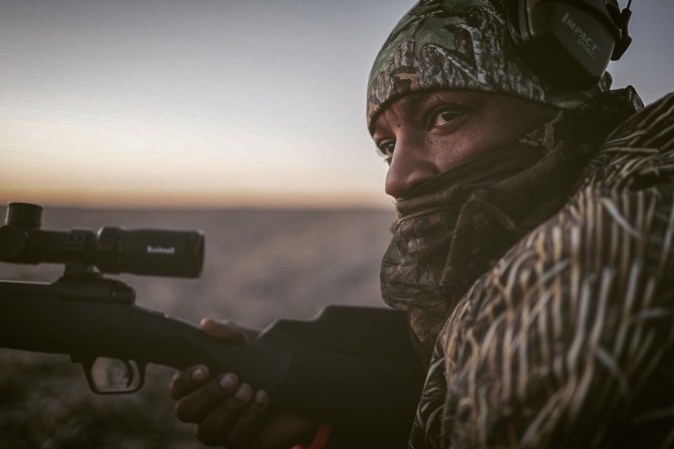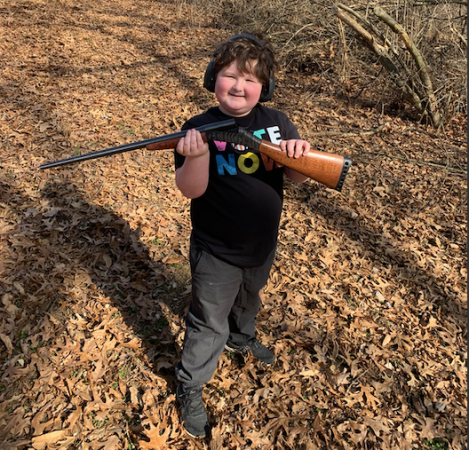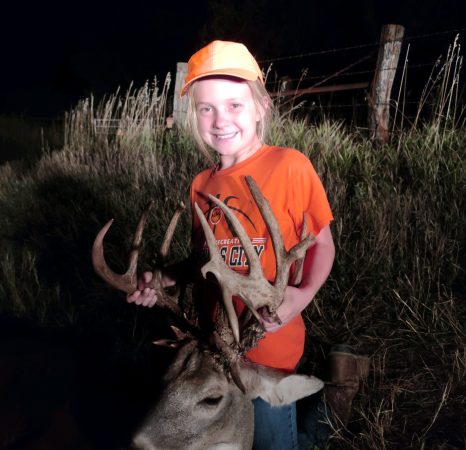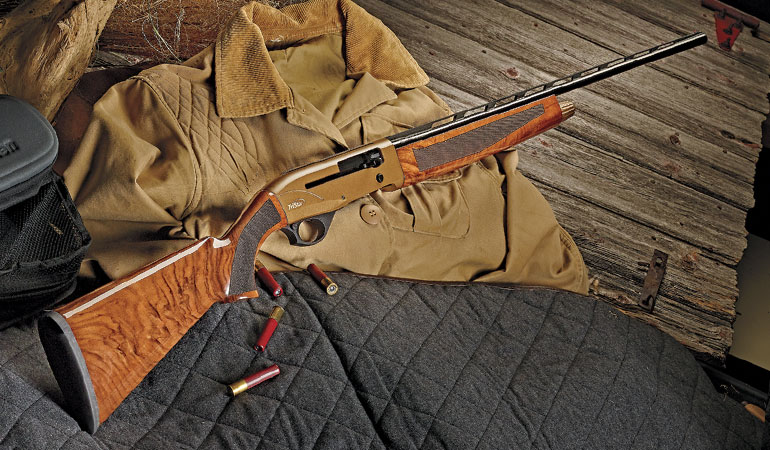We may earn revenue from the products available on this page and participate in affiliate programs. Learn More ›
Michael Eugene Stock Sr. is memorialized by a granite headstone in a Midwestern cemetery and the name he passed down to his son, along with his love of deer hunting.
Michael Ellis McKean shares that very same legacy, handing down a middle name and a love of hunting to his eldest son.
The two men, products of America’s Corn Belt, never met, and while they are commemorated by a lot more than tombstones, they shared a dream of hunting the West. They also passed on that itch to their sons, who had the good fortune of meeting and becoming friends at about the time that their respective fathers were passing on.
One characteristic of a good idea, just like a good joke, is that nobody can remember who came up with it. It might have been me who suggested that Mike Stock Jr. and I should hunt somewhere in honor of our late fathers. Or maybe it was Mike, an executive engineer with Winchester Ammunition, who said that if we did, we ought to hunt in the style of our dads when they were our age, with the gear and the spirit that they would have carried. No matter the source, the idea caught fire with both of us, but we had to bank it for a couple of years while we figured out where to go and just how to memorialize these men.
“Here’s the deal,” Stock said last spring. Exasperated by the endless planning, he was ready for action, “It doesn’t matter if it’s a caribou or a mule deer doe. We do it this fall.
He recalled his father—as I recalled mine—always talking about hunting elk or pronghorn but never saving the money or taking the time off from work to fulfill the dream.
“It’s time to pull the trigger or let go of this foolishness,” said the junior Stock, channeling the voice and phraseology of his father, a no-nonsense grocery store manager from south-central Illinois.
The idea of a throwback hunt forced us to do a little math. Adding our current ages to the years of our fathers’ births put us in the late 1970s, the golden age of car-chase movies, military coups in the developing world, disco perms, sideburns, and corduroy. But it was also a golden age for hunters, as exemplified by Roy Weatherby’s extravagant rifles, a flush of innovative calibers, the emergence of compound bows, and a league of new hunters eager to revive the American folk arts of wildlife calling and camouflage.
“We’ll use old Winchester rifles that we find in pawn shops,” said Stock as we started cementing plans.”We’ll hunt mule deer on my place in eastern Montana,” I offered.
“Wear anything you would have worn in high school,” he directed, “and nothing with a logo or a marketing campaign. We’re stripping this down to bare wire here.” This is precisely, and unremarkably, how our fathers—and probably your fathers—dressed when they hunted.

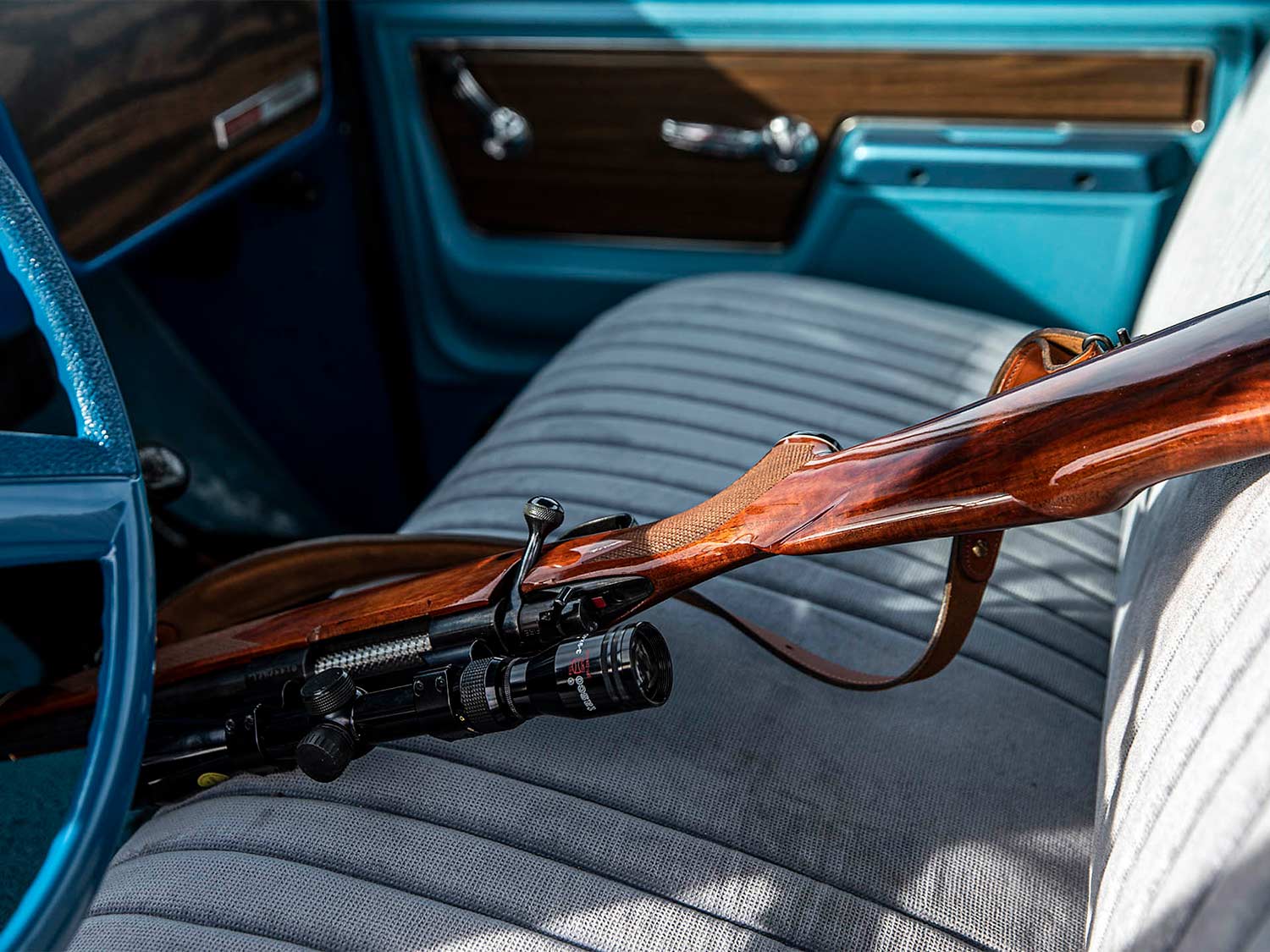
One concession to modernity would be our ammunition, which Stock would supply from the Winchester warehouse. I knew he was serious about the whole enterprise when he shipped me a zippered soft rifle case, the outside all vinyl and faux-leather stitchwork, the interior a plush red synthetic velvet that looked like the inside of a gangster’s coffin. But what really got me stoked was what the case contained: a Winchester Model 70 chambered in .30/06 and topped with a 4X Weaver K4 scope with a fine-wire crosshair. Research into its serial number indicated the Winchester had been manufactured in 1946, and I wondered how many hunters before me had gripped its work-worn walnut and cycled its snappy action.
The idea of this hunt was so good and right that I told several friends about it in the months leading up to November. One buddy suggested we might want to borrow his uncle’s pickup, a 1972 Chevy K10 that could have been my dad’s farm truck if he had believed in four-wheel-drive. Louie Ball, a Vietnam veteran and Purple Heart recipient from Great Falls, Montana, didn’t restore that truck so much as he maintained its original condition. We felt honored to include it in our tribute, and as much as anything, we started to shape the style of our hunt after that quintessential 1970s pickup.
The additions of the Chevy and the rifle made me pause, though. These seemed like props, inorganic contributions to what Stock and I were really trying to re-create, which was the simplicity of hunting when our dads were young, before marketers and brand -influencers tried to convince us that we require $1,000 in clothes just to kill a deer.
But those props also provided a hard stop. Anything else on our hunt would be from our own possessions. After all, the gear from 40 years ago that made us who we are surely could be counted on for at least one more deer hunt.
Hunt for the Ages
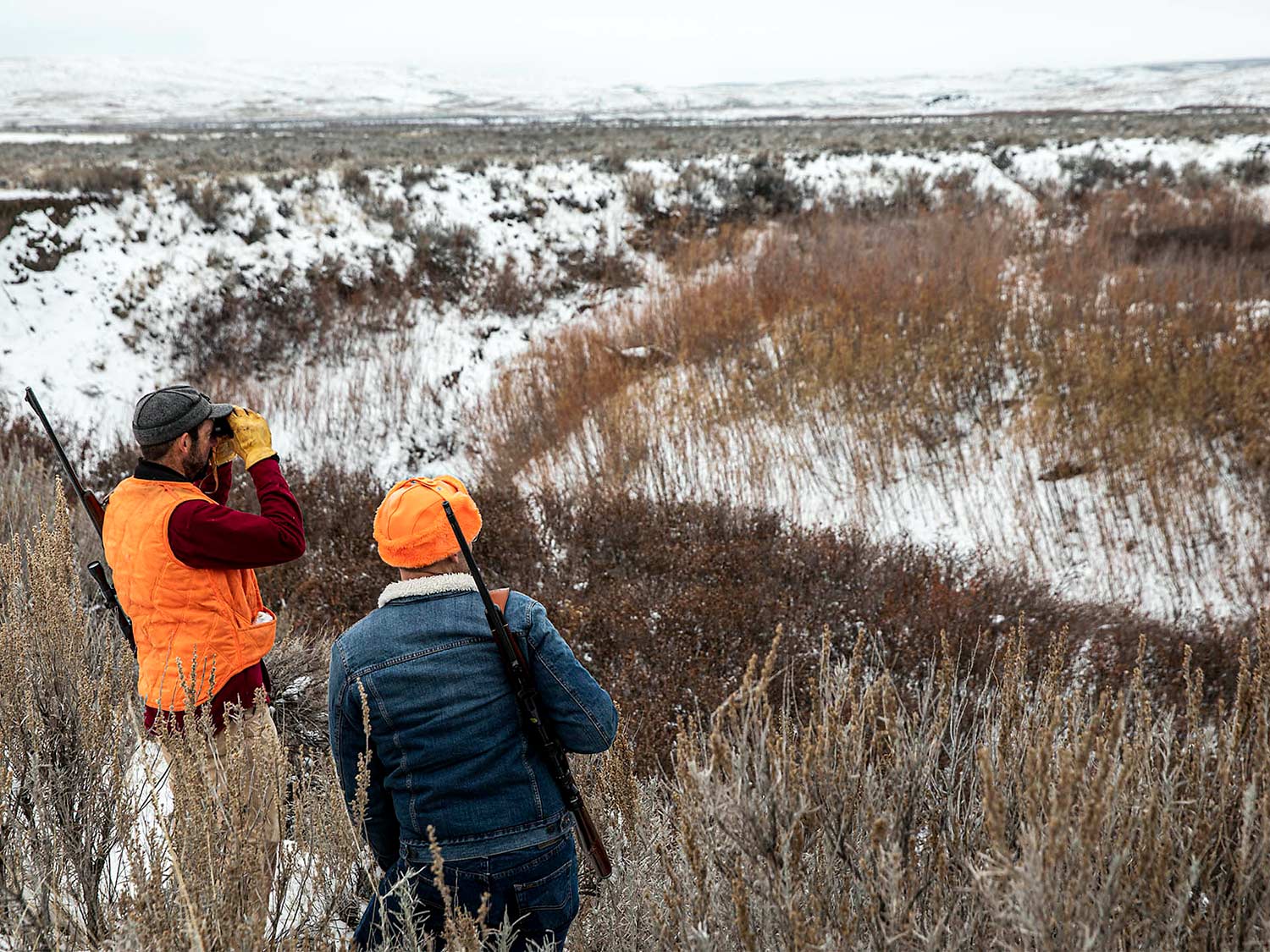
Stock showed up in Montana last November with a Model 70 chambered in .270 Win. that personified the excesses of the ’70s. You might call it a working man’s Weatherby, with high-gloss walnut and rosewood accents and metalwork so highly polished that you could use the bolt as a dental mirror. As Stock unpacked his duffel in my guest room, I was transported back to the eighth grade.
There was a blaze-orange trooper hat, complete with synthetic-fuzz earflaps and adorned with a giant “Winchester” patch stitched into the upturned visor—the lone exception to his logo rule. There was more flannel than you’d see at a state fair tractor pull. There were waffle-pattern long johns too. But the crowning item was a mesh-backed ball cap studded with two decades’ worth of Illinois buck pins, annual mementos of deer season in the Land of Lincoln.
As he sat on the bed working the bolt of the deluxe Winchester, Stock told me more about his dad and his own induction into hunting.
“As a boy, I used to sit in my dad’s velour recliner on November nights and wait for a phone call to tell me if a deer had been spotted at camp that day. If they were successful, my dad would let me join him and his hunting buddies in my grandmother’s garage to butcher deer they brought home. When I turned 12, I finally got to go on hunts in the Shawnee National Forest. We conducted deer drives and shot Foster slugs out of smoothbore shotguns. We sat on stumps. Hunting clothes were denim, flannel, and maybe a nylon jacket. We got wet and cold and I miss every single minute of it, especially the sound of my dad’s shotgun blast from across the timber.”
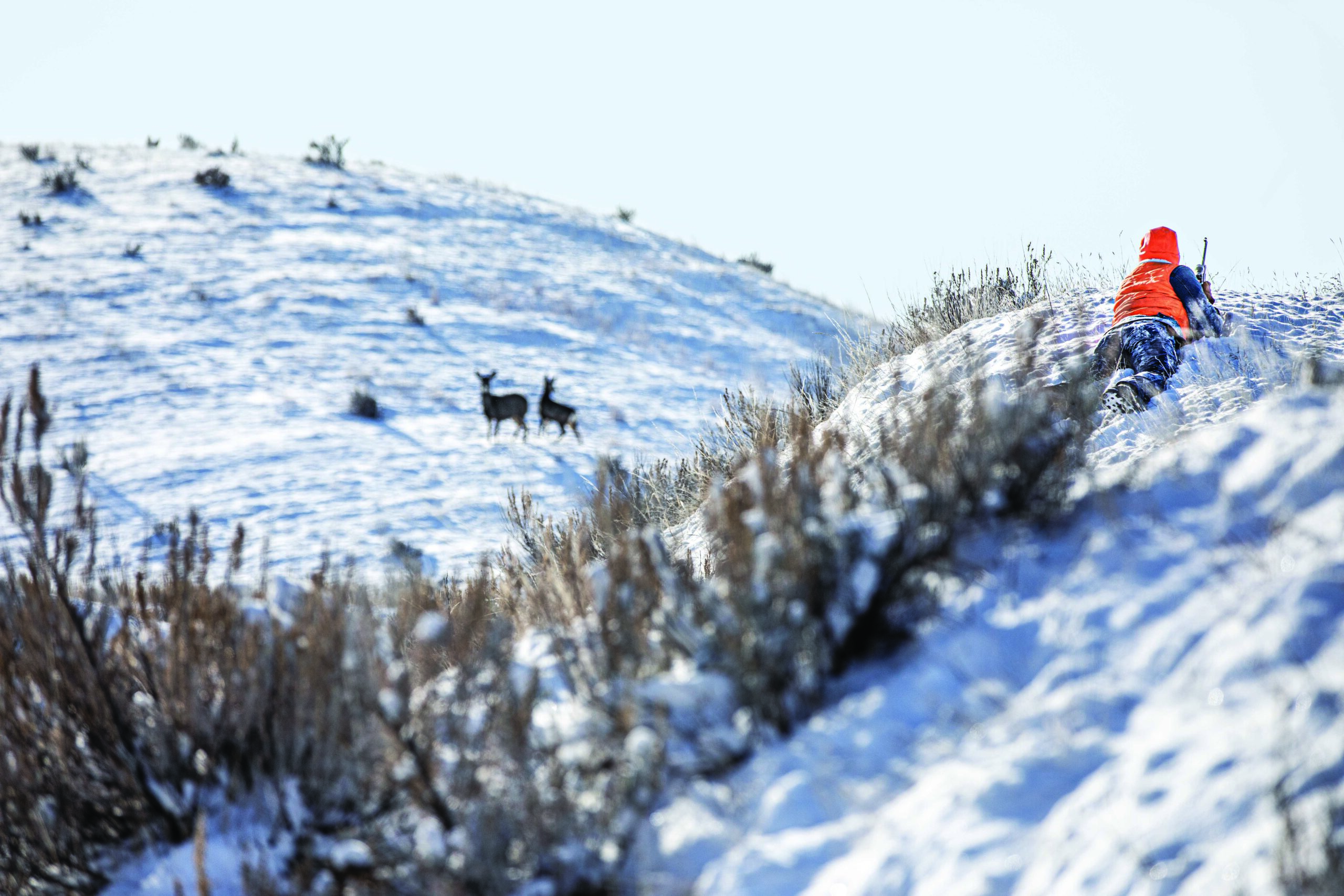
Stock’s reminiscing still singing in my head, I went to sort my own gear: flannel shirts from my high school days in the ’80s, a ratty old Levi’s denim jacket that held so much nostalgia—-along with stains and rips—that I could never bring myself to either give or throw it away. I dug out cracked leather cowboy boots that badly needed a treatment of Sno-Seal waterproofing. I was stuffing my standard kit—laser rangefinder, LED headlamp, chemical hand warmers, and fire starter—into a backpack when Stock interrupted me.
“What’s with the backpack?” he asked, a little edge to his question. “A pocketknife, a sandwich, and maybe some extra shells, that’s all I’m taking. And that all fits in the pockets of my jeans.”
I paused long enough to recall that my dad never carried a backpack on his deer hunts around our Missouri farm. And then it hit home what Stock was trying to accomplish. It wasn’t just looking the part of our fathers; it was hunting the way they hunted, focused on the task without being distracted by the tools.
As I got under the blankets that night, wondering how our denim and flannel would handle the next day’s subzero temperatures, I thought about my own arc after my father introduced me to hunting. As I grew away from home, he followed my accomplishments as a newspaper reporter and then a magazine writer, and was gratified to see me make a living out of writing about hunting and guns, two of the only things he gave a spit about.
The year my father died, my wife and I bought a ranch outside the Montana town where we’d decided to raise our family. It brought my farming background full circle and gave me a place to teach my kids about hunting and guns, just as my dad had taught me. I always pictured hunting with my dad on our new place, giving the Missouri farmer the Western hunt he’d always imagined.
But just as death stole Stock’s father, and the chance to make new traditions with his grandchildren, it took my dad before he could hunt my ranch in exactly the manner that Stock and I intended.
Mission Accomplished
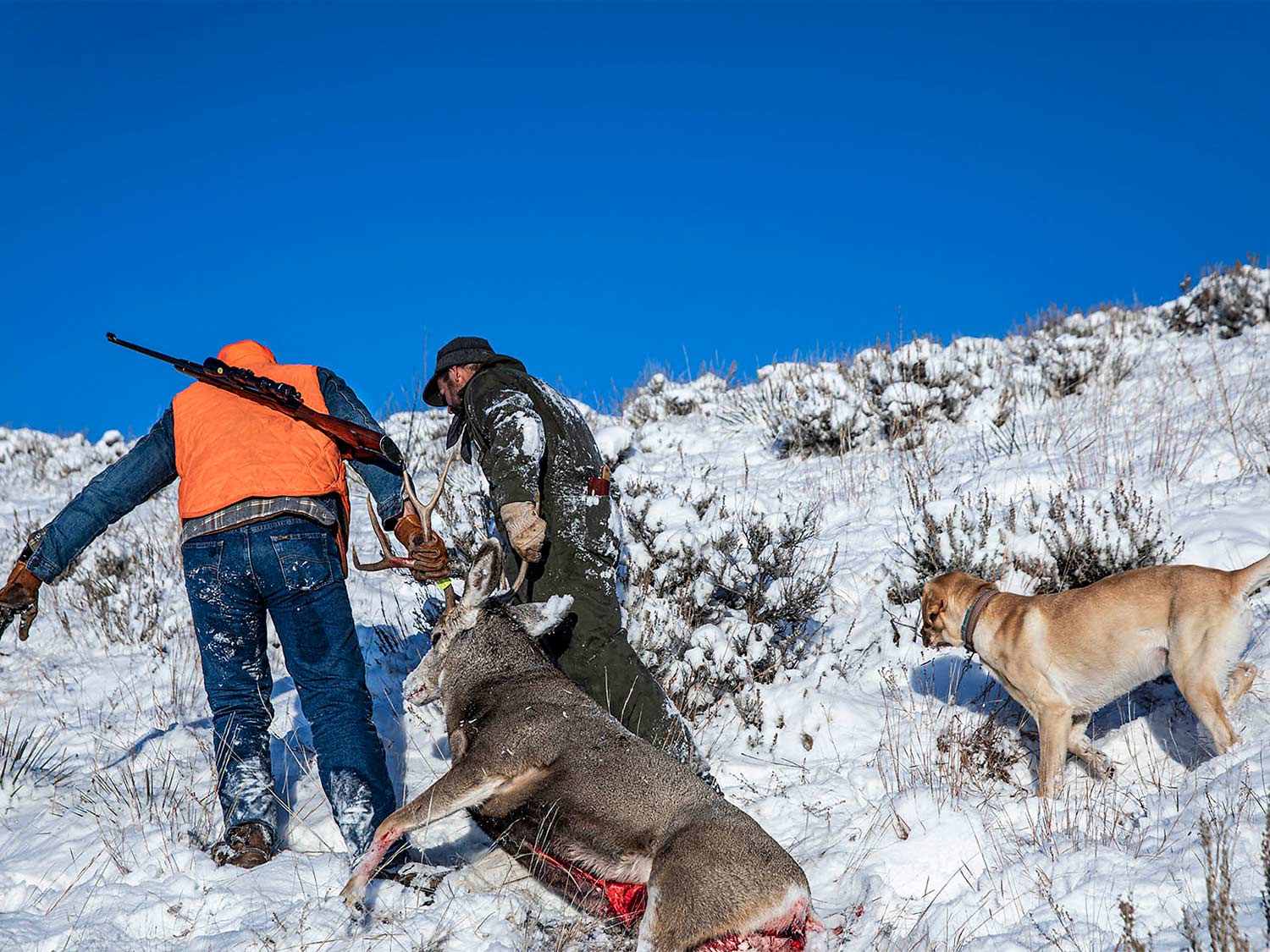
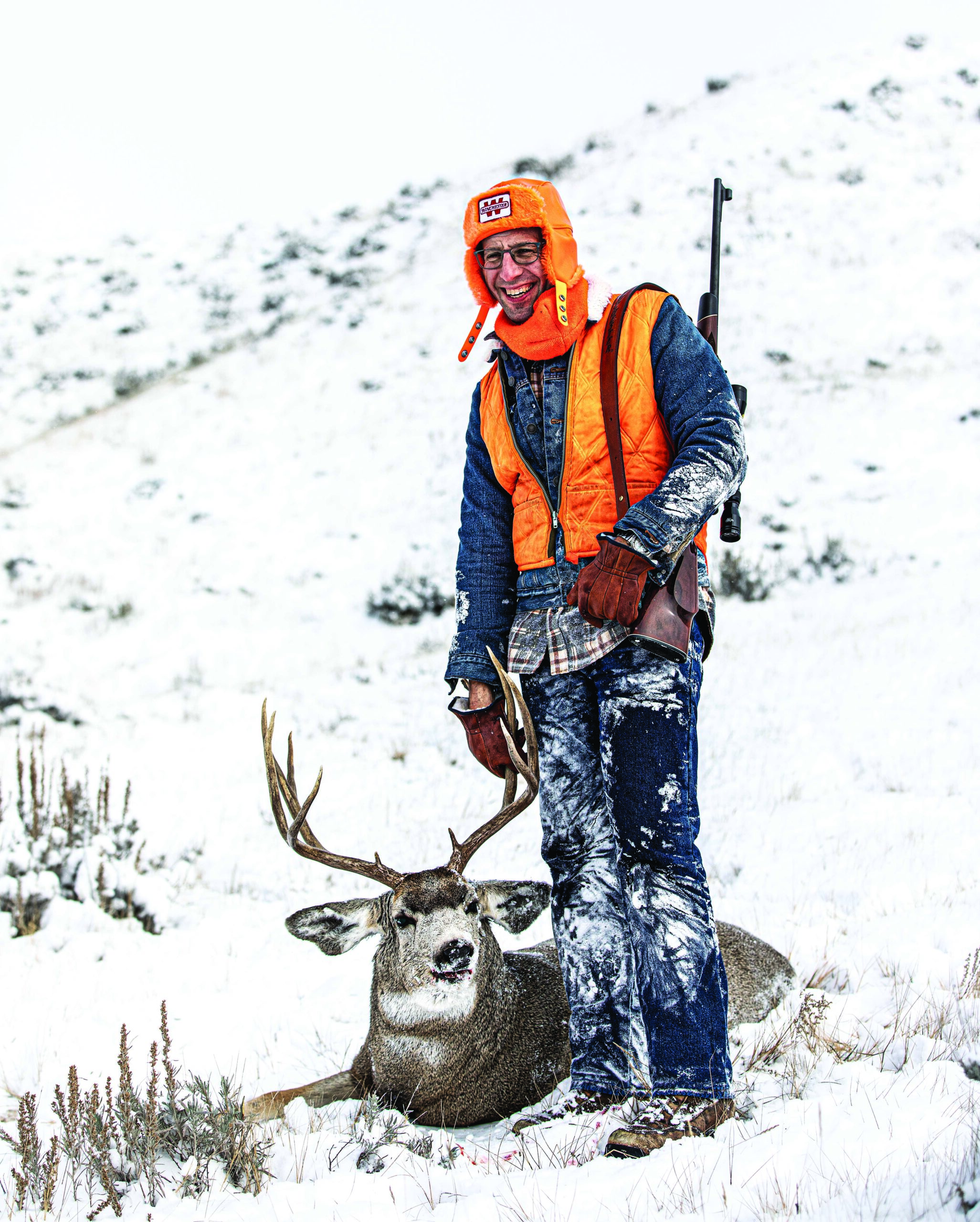
Our hunt was as successful as we could have wished for our fathers. We decided to hike a few draws that generally hold deer, and we spotted a 4-point buck bedded on the open nose of a ridge, surveying a group of a half dozen does that were feeding through fresh snow. We’d have to scale a steep hill and then make a fairly quick shot, since there was no hiding cover on the bald top. One of the liberating things about pants-pocket hunting is that there’s not much to deploy. No scope to dial or bipod to level or backpack to shuck or range to find.
This was Stock’s buck, so he went alone. Photographer Tom Fowlks and I watched Stock drag his blue-jeaned legs through the prairie snow, and we knew he was close to having a shot when he discarded his orange trooper hat for the final approach on the bedded buck. The 1970s may have given us some great music and movies like Jaws and The Godfather, but it also gave us vinyl. At temperatures in the low single digits, vinyl turns hard as urethane, and Stock’s hat rolled down the hill with the destructive momentum of a bowling ball.
At the sound of the shot, Fowlks and I charged up the hill. There was Stock, collapsed on his rifle, a handsome Montana mule deer motionless in his bed 200 yards up the ridge. The cold wind of a Montana Veterans Day needling through my denim, I waited with Fowlks for a few minutes before approaching, giving Stock some time to savor the moment that his father had dreamed about.
Read Next: How to Bivy Hunt for Giant Public-Land Mule Deer
The Aftermath
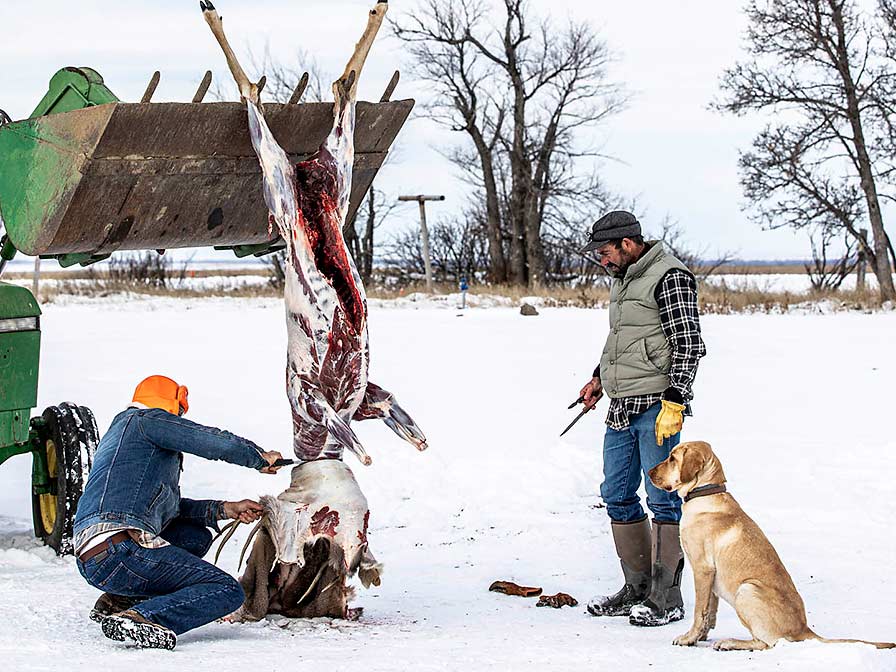
The trajectory of grief looks a lot like the arc of a Foster slug. It erupts from the barrel hot, urgent, and raw. But time and distance tame both, and at some range a slug becomes more or less harmless, a wad of earthbound lead. Likewise, grief bends into fond perspective, which eventually becomes tradition.
My father’s traditions were simple. He’d shoulder a rifle on opening day and walk into the wind, intending to traverse our farm and be back for lunch. When I was old enough to join him, he’d send me to a corner post to wait while he walked, in the hopes he’d push deer my way. He encountered deer—and he shot some dandies—by knowing where he’d intercept them on their flight from elsewhere. His other tradition: He gutted deer with an old skinning knife that he built from a kit. That knife now hangs from my belt every time I hunt deer. We all have origin stories and traditions. Stock hunts in his dad’s old quilted flannel shirt and grinds his deer into German-style sausage. I walk to hunt, and I write for Outdoor Life because my dad read every word Jack O’Connor ever wrote.
As Stock gutted his buck, the melted snow on his blue jeans refreezing into stiff ice chaps, he talked about his own trajectory.
“I work for Winchester because of this one day during deer season,” he said. “It was one of those stump sessions in the Shawnee, and I had eaten all the peppermint candy I had in my pockets. I passed the boring part of the day by reading every warning—in both English and French—printed on the box of Winchester 12-gauge slugs I had with me. I noticed they were made in East Alton, Illinois. I was an Illinois kid. I liked hunting and ammunition. Fast-forward 10 years, and as an engineering student I landed an internship with Winchester. It’s the only place I’ve ever worked.”
Dragging that buck off the ridge, the wind in the sage and the cold screwing into our thin waffle long johns, I glanced over at Stock. For just a moment, by a trick of the light or the blowing snow, he could have been my father at my age, dragging a buck that would soon make meals and memories for another year.
Choosing Classic Deer Loads
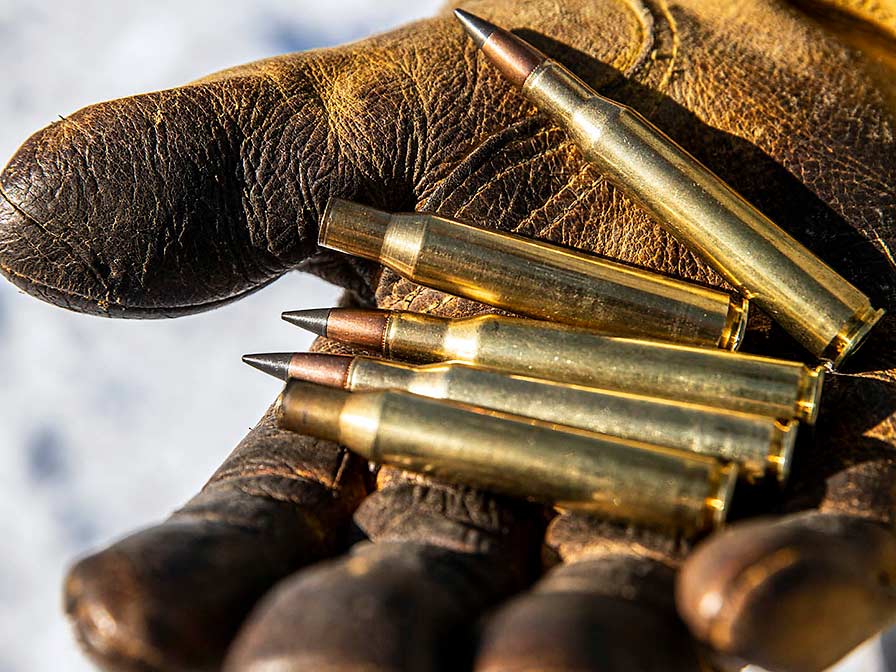
Deer ammunition can be almost evenly divided into the classics, those brands and loads that American hunters have been shooting for generations, and new bullet designs with specific attributes to penetrate deeper, or retain weight, or maintain accuracy over long distances.
I went for the classic in my .30/06, shooting Winchester’s 180-grain Power-Point. It’s been a staple of Winchester’s lineup for 60 years, and features a hard-lead core and heavy jacket.
“It’s the old trusty,” says Stock. “It’s going to do its job without gimmicks. It’s a jacket and a core that’s designed to penetrate and expand, but it’s also Winchester’s second-most-accurate bullet.”
Stock shot Winchester’s relatively new Deer Season XP in his .270 Win.
“It’s a bullet with a large frontal area and a polymer tip. The tip helps stabilize its flight, making it our most accurate bullet. The large frontal area is designed for rapid upset but not great penetration. It’s built specifically for deer-sized game.”
Deer Season can make an older gun accurate again,” adds Stock. “It has a very thin jacket and a more malleable core, so it shoots well in older guns that have worn barrels because the bullet design makes better contact with the rifling.”

